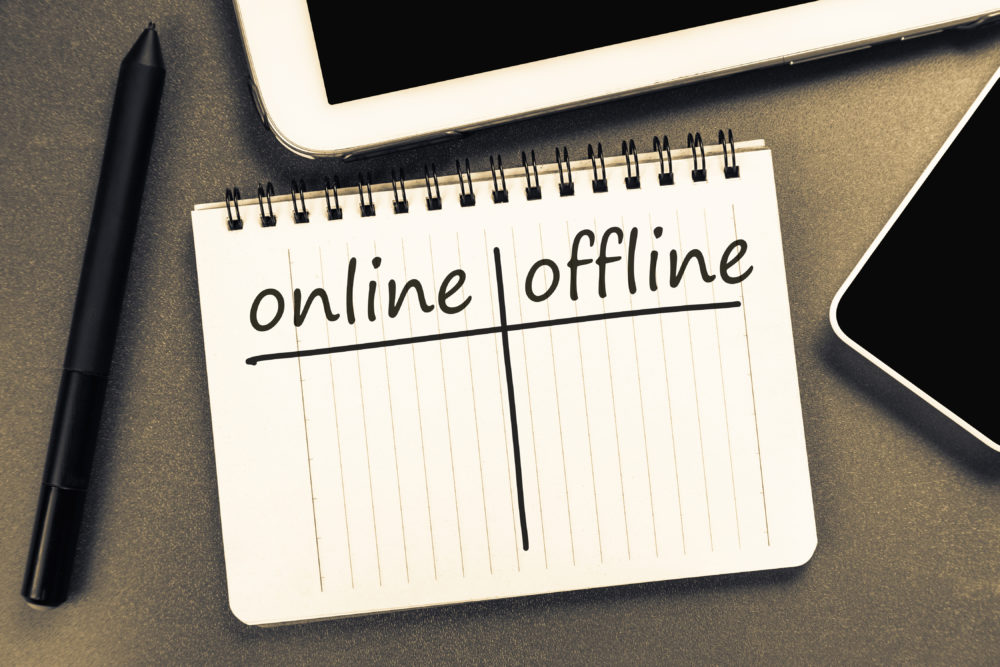Online marketing may be popular, but many of the strategies that we use offline are still relevant today.
It shouldn’t be a case of choosing one over the other. Quite the contrary: an integration of offline and online marketing efforts could maximise your strategy.
This is because no single strategy fits every portion of the audience. For instance, when Pepsi stopped its TV advertising in favour of social media, it dropped to third place in the market.
By blending your online and offline marketing, your customers will get a sense of a trusted and cohesive brand. Your success is down to how you manage your strategy.
James Birch, sales and marketing manager at Colour Graphics, explores some straightforward tips that will help you merge your marketing efforts and make the most of all channels.
Online call to action (CTA) for offline promotions
Imagine you’ve produced an inspiring TV advert for the Christmas window of heart-wrenching talking pieces.
If you know the first showing date for launch on television, you can count down to the premiere with an online call to action on all your social media channels and maybe even a preview on your website to build up some excitement.
Your call to action could even be as basic as pushing your customers into your store at the time of a sale.
Competitions and free giveaways
One of the golden chalices of any marketing effort is the active email address of a loyal customer.
Your offline marketing efforts could simply be a means of encouraging your customer to share this email address. For example, you could run a magazine-based competition that requires an email for communication to winners.
“One of the golden chalices of marketing is the active email address of a loyal customer”
You would need to include the obligatory boxes to tick to opt in or opt out of further contact, but you are likely to get a fair share of email addresses. Take a look at this GDPR guide if you need a refresher.
And, if we’re going to be cynical, customers may be more willing to give an email address to a company who gives free gifts or discounts. It’s something to think about.
Use online data for offline efforts
The people who visit your website are generally the same people who visit your store, so it’s best to see them as a single customer.
Their behaviour on your website and interaction with your call centre is likely to mirror their behaviour in-store. This makes your site a mine of information about how you could best organise your store or organise in-store promotions.
This is more than just branding your online effort to match the branding in your store, though this is important.
It is about seeing that a set number of people clicked on an item on your website, but it did not convert to a purchase. This means there is interest as well as a need for a push to make the sale. This prompt could be a central display as the customer walks into the store or placing a promotion near the tills. The key is to make the purchasing process as easy as possible.
User-generated content on your offline marketing
User-generated content and interaction with the customer is a huge plus of online marketing. The trust given to a fellow customer exceeds the power of a well-written persuasive piece by a marketer.

It is possible to shape your offline market by encouraging interaction online too. You may ask for help with your next slogan or seek the star of your next advert through selfies or online videos.
Alternatively, you could encourage artwork for a new product or new advert alongside a brief tweet about why this would be good for your company.
It is possible to start off this interaction through offline marketing if you’d prefer – just direct your customer to your website or social media sites to submit their entries.
Use UTM codes to track your campaigns
With online marketing, it’s easy to use data to prove a return on the investment. You can’t tell with offline marketing if you have made an impact with a specific customer as you can with your website and social media analytics.
However, if you include a call to action and a lead capture form on your magazine or newspaper advert, then you should use a UTM code to help you track the source, medium and campaign name that prompted the interaction. This enables Google Analytics to monitor what campaign directed the customer to you.
You could also use a trackable phone number for interactions on specific offline campaigns. This will give you information about demographics that will be useful for continuing your marketing efforts.
A digital company offline
Mathew Porter is the director of Kumo, a digital agency specialising in online marketing strategy. He talks to Anna Jordan about how he brought digital offline at a recent business show.
Driving new business was a key objective set for our agency for Q4 2018 to drive new leads for the start of 2019, with a primary focus on converting these leads and continuing grow in new business during the New Year.
A new area identified for potential were offline leads, which has always been an area that our digital agency had neglected due to the nature of our online business. A possible source for generating offline leads was the attendance of business shows and hosting stalls at exhibitions.
This type of activity would not only put our agency face to face with prospective business decision makers that are not actively investing in online marketing, but also aid us networking with similar-sized companies that we could connect and work together with.
Our agency believed that the key to maximising these events was to incorporate an online channel with the offline interaction at these events. The solution was to build a form that could be accessed via tablet devices, that interested parties are able to complete while attending the show.
Once completed and the user opting in to the usage terms, the data would be sent to 3rd party services. The final step would be for an automated suite of emails to be sent to the contact detailing an initial report of their businesses current online marketing for the services which they had expressed an interest in.
We found that using personalised automation to build upon an initial talk in person helped to cut down on the time taken to act upon potential leads while removing manual stages of developing a lead, resulting in a higher conversion rate.





